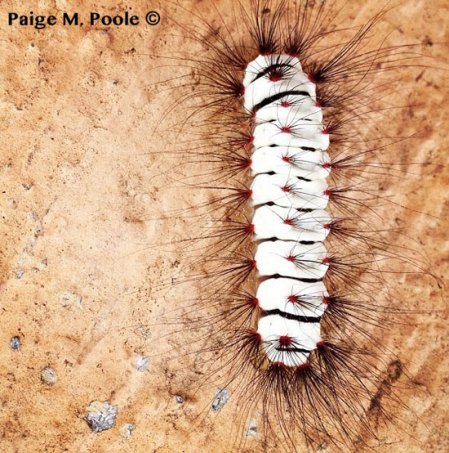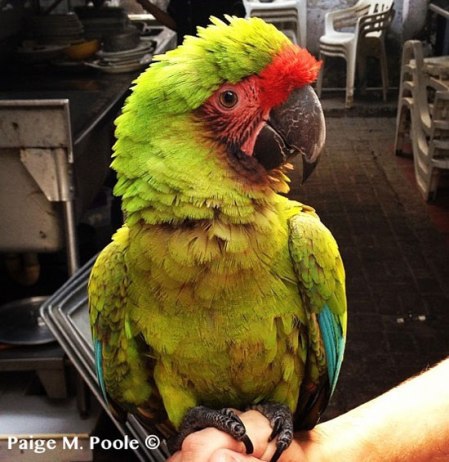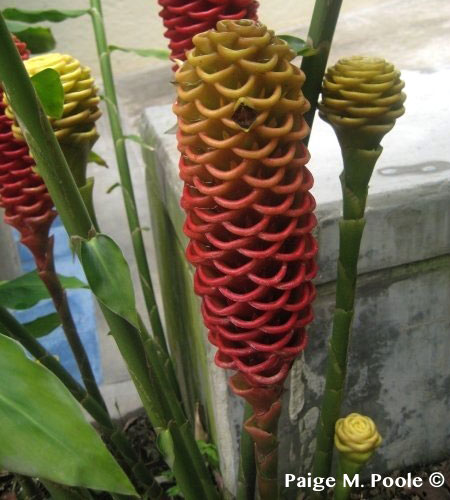A few weeks ago, I started a series of posts focusing on unique facts about Colombia. In the first post, “Two Nifty Nature Facts,” I told you about the highest coastal mountain in the world, the Sierra Nevada, as well as the amazing emerald production in Colombia—the highest level of emerald production in the world. In today’s post, I am going to tell you about two more interesting nature facts about Colombia. Are you ready to be amazed?

Colombian caterpillar
1. Colombia has the highest level of biodiversity per square meter in the world!1
There is much debate about which country has the overall highest level of biodiversity in the world, but most tend to agree that per square meter, Colombia has the highest level. What does this mean? It means that Colombia has an extraordinarily high level of diversity in its flora and fauna.
Perhaps the most outstanding diversity in regards to fauna is found in the number of bird species found in Colombia. Colombia is home to 1,897 different species of birds—having more than any other country in the world.2 This makes Colombia a true bird watchers’ paradise! You can see everything from quetzals to wrens to parrots and herons.

Parrot on the Caribbean Coast
In addition, Colombia has approximately 467 species of mammals, 609 species of amphibians, 475 species of reptiles, and 35,000 species of vascular plants!3 Some of the most unique mammals you can find in Colombia include the extremely rare mountain tapirs as well as lowland tapirs, giant anteaters, the capybara (the largest rodent in the world), Amazonian manatees, pink dolphins, three toed sloths, agoutis, and titi monkeys, among MANY others. As far as amphibians and reptiles go, Colombian is home to rainbow boas, pygmy coral snakes, anacondas, harlequin frogs, glass frogs, and five species of sea turtles to name a few.

Capybaras
The diversity of plants in Colombia, as previously mentioned, is also pretty incredible. Colombia hosts around 4,000 species of orchids4 (the national flower of Colombia), several species of palm trees, and the highest number of heliconia species in the world. Flowers, like birds, are everywhere in Colombia. No matter where you go, you will encounter beautiful flora. In fact, the flowers in Colombia are so beautiful and bountiful that good deals of them are exported to other countries for use in floral arrangements.

Heliconia plant
2. Colombia is the only South American country with access to both the Pacific and Atlantic Oceans.
While all South American countries, except Bolivia and Paraguay, have a coastline, Colombia is the only country to have two coastlines, one on each ocean (Pacific and Atlantic).
Out of the 32 departments that make up Colombia, four border the Pacific Ocean (Nariño, Chocò, Cauca, and Valle de Cauca), while eight departments have coastlines on the Atlantic Ocean (la Guajira, Magdalena, Atlántico, Sucre, Antioquía, Córdoba, and Chocó). And, if you noticed, only one department, Chocó, happens to border with both the Pacific and Atlantic Oceans! This makes Chocó an incredibly unique department, because it is the only one on the entire South American continent that borders both the Atlantic and Pacific Oceans.

Palomino-Atlantic Coast of Colombia
The fact that Chocó has coastlines on both the Pacific and Atlantic Oceans means this Colombian department is host to a plethora of varied and extremely unique ecosystems. One specific area of Chocó with several exceptional ecosystems is the area known as the Darién Gap. Some areas of the Darién Gap have been named “biodiversity hotspots” due to the flora and fauna found there, and the ecosystems contained in the Darién Gap have been described as some of the richest and most complete ecosystems in all of Latin America5.
Thanks for checking in and until next time,
Paige M. Poole.
References
- 1http://www.aiesecus.org/houston/?p=1752&doing_wp_cron=1375279839.83928704261779785156251
- 2http://www.elespectador.com/noticias/medio-ambiente/articulo-394526-colombia-el-pais-mas-diverso-aves
- 3http://www.cbd.int/countries/profile/default.shtml?country=co#status
- 4http://www.sco.org.co/directorio
- 5http://www.ecoreserve.org/tag/darien-gap/
About the author:
“Paige M. Poole is an Alabamian and traveler at heart who has settled, for now, in Barranquilla, Colombia, and earns her living as an English professor at the Instituto de Idiomas (Language Institute) at la Universidad del Norte (University of the North). When not teaching English, she enjoys blogging, traveling, relaxing on the beach, and spending time with her partner and two cats, Milo and Sophie. You can see more of Paige’s traveling experiences in her personal blog www.trotamunda.wordpress.com
Related articles
- Two nifty nature facts about Colombia (www.uncovercolombia.com)
- Colombia: Birders paradise (www.uncovercolombia.com)
- Natural Parks in Colombia: Part I (www.uncovercolombia.com)
- Rural Tourism in Colombia (www.uncovercolombia.com)


Reblogged this on Transatlantic Adventure.
There is actually an “ant eater” crossing sign on the coastal road between Cartagena and Barranquilla. I have never seen that anywhere else!
Courtenay–I LOVE that sign. It has made me try and spot those sneaky creatures, but so far I haven’t been able to.